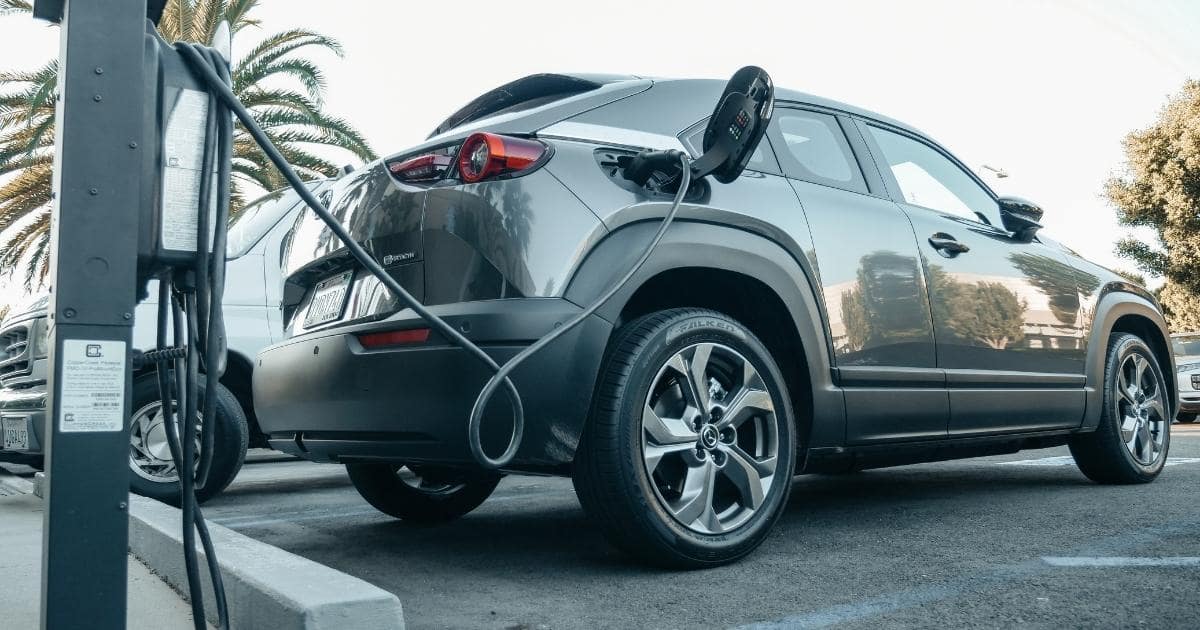The Road Ahead: Navigating Procurement Challenges with an Automotive Industry Expert
For automotive procurement teams, navigating the complex landscape of procuring components for vehicles is no easy feat. With an ever-changing industry requiring staying up to date with technology developments, current trends, and new regulations, it can be difficult to manage costs while still ensuring quality parts.
In this blog, Arkestro sat down with Jeoff Burris, the Founder and Principal of Advanced Purchasing Dynamics and Procure-Force solution team member, to get his thoughts on hot button topics such as: supply chain disruptions, quote fatigue, managing costs, and more – that are top of mind for automotive procurement teams. So fasten your seatbelt as we take a look at what lies on the road ahead and how to navigate procurement challenges in the automotive industry!
Arkestro: Thanks for taking the time to speak with us, Jeoff! Why don’t we start with you telling us a little bit about yourself.
Jeoff: Glad to be here! Well, I’ve always had a passion for understanding and reducing costs, and in 2004 I turned that into a business opportunity by founding Advanced Purchasing Dynamics. The business thrives on collaborative partnering with suppliers and precise cost engineering in a variety of industries, but I have a particular passion for automotive since I worked for Ford Motor Company for over a decade.
A: That’s an impressive background! So honing in on the automotive industry, what are some key challenges that automotive procurement teams are facing?
J: I think right now, what they are really facing are the after effects of what transpired before and through Covid. A lot of pricing hasn’t been settled based on the inflation we have experienced.
Purchasing organizations are short-handed because everyone thought the higher interest rates were going to cool off the automotive market, so purchasing organizations weren’t allowed to add resources that they needed to add. What’s happened is instead of falling off for auto sales, the first two quarters of the year – they have been pretty robust, so folks are needing to play catch up.
Maintaining Supplier Relationships During Tumultuous Times
A: What about the macroeconomic conditions and supply chain disruptions have challenged the older, process-centric approach to interacting with suppliers?
J: Before Covid the process really wasn’t good. Purchasing 3.0 was the ability to send RFQs to a large number of suppliers at once via email. What that did was buyers were over quoting suppliers causing quote fatigue. Buyers were quoting new programs 3-4x before selecting a supplier and engaging 10-12 suppliers for each round.
CPO’s that came to us prior to Covid were telling us suppliers aren’t responding to RFQs anymore (ie. quote fatigue). Email and Excel made it far too easy to get way too many quotes from too many suppliers.
A: How do you think a solution like Arkestro can help with quote fatigue?
J: Arkestro allows you to limit the number of suppliers that go on quote by utilizing predictive pricing and analytics tools. It’s also able to provide sales with responses when sales is chasing a piece of business. A lot of time in automotive, tier one automotive suppliers are quoting a piece of business to BOE’s and tier one purchasing people are sending out RFQs, and it’s not a piece of business they want.
By using predictive pricing, you can respond to sales and say “I have an 80% probability that we can source this at $2.20,” which is the number given to the original equipment (OE) customer. When the tier 1 sales team wins the piece of business, now purchasing is in a place where they can go back to the suppliers with the piece of business in hand. Understanding how suppliers quoted in the past allows us to limit the number of suppliers you can go to to get a quote at that point of time, if that’s what you need to do.

A: Do you think that Arkestro helps create more meaningful relationships with suppliers?
J: Absolutely. We had a CEO tell us one time that he wanted suppliers who would answer the call when buyers called on a Saturday morning. If a buyer is quoting 10 suppliers and the suppliers are experiencing quote fatigue, they are not going to answer a call on a Saturday.
If the supplier and buyer have a relationship where the supplier knows the business opportunity is real, suppliers will pick up the phone. Arkestro allows the opportunity to make more meaningful relationships with suppliers.
A: Speaking of supplier relationships, how do you manage quality suppliers? What does your ideal effective collaboration with suppliers look like?
J: I always look at it in the simplest terms. The metrics we use are defective parts per million as the result metric that an automotive supplier wants from their suppliers. And how do you work constructively with your suppliers to drive those PPM numbers to the lowest possible level.
We have some customers who have moved from parts per million to parts per billion because they are getting so good at driving improvements with their supply base.
A: What steps do you take to mitigate risks related to supplier disruptions or changes in market conditions?
J: Technology can help alleviate this. Take very specific action with regards to any changes in a supplier’s delivery performance. We’ve all got good MRP systems that track supplier delivery, but some companies are not robust in how well they measure the delivery. They may not respond to the smallest blip, such as deliveries being late 2-3 days, because production was able to be sustained. When in fact, you really ought to be investigating those causes for lateness as soon as they blip up. And technology, such as Arkestro, can help with some warning notices for that.
Managing Costs and Automotive Supply Chains
A: Automotive companies have been racked with supply chain issues. What if anything can you share about how the procurement process plays a role in shortages and what advice do you have for the audience about what the biggest areas of opportunity are?
J: I’m going to divide it into two different areas. The first is direct materials. You have to keep a firm grasp on what your supplier’s production capabilities are and how their financial stability is going forward.
The second is indirect materials. When it comes to shortages on the indirect and raw material side, that’s where I see a tool like Arkestro that constantly pings the market to be able to advise buyers when they see ramped up opportunities based on what the market is telling them or shortages when strings are getting tight.
A: How do you ensure a stable and reliable supply chain for automotive components and parts?
J: Relationships. When you are trying to engage way too many suppliers you end up having poor relationships with many suppliers. If you take an approach where you say, “we are going to define and determine who the best suppliers are for our needs” and do an ideal supplier profile – this allows you to find good matches and limit the number of suppliers, which puts you in a much better position to handle when the market goes up or down.

A: What strategies do you suggest to manage costs while maintaining quality standards in automotive procurement?
J: An ideal supplier profile needs to have definitive metrics about what it means to be a quality supplier for the products you are buying for your company. It is the buyer’s responsibility to get a competitive playing field with a number of suppliers that meet those requirements. Once met, then pricing becomes the only way a supplier can differentiate themselves.
That’s our recommendation at Advanced Purchasing Dynamics; find ample suppliers that can meet your requirements from a quality, delivery and technology standpoint. Work with those suppliers to develop the capabilities and let them compete on price.
The Rise of Electric Vehicles and Other Automotive Trends
A: With the rise of electric vehicles and their more complex parts, what challenges do you foresee procurement and category managers facing that they might not have had to deal with before?
J: Before the COVID shortages, companies that weren’t used to dealing with electronics suddenly had electronic actuators and sensing devices on their components. There is a big shortage in electronics purchasing and expertise in these companies.
A lot of software was being localized in the vehicles rather than having a central computer. So not only were companies having to buy electronic components but they were having to develop electronic software for things like steering, brakes, and seat suppliers.
What is interesting now, is that the trend is going a different way. Tesla led by centralizing computing, while Ford and other manufacturers are following that trend with centralized computing and programming – taking software development away from some suppliers.

A: What are the current trends or future developments you foresee in automotive procurement? Are you skeptical about any?
J: I’m concerned that the market is over anticipating the adoption of electric vehicles. I think when you drive 50-100 miles a day, they make a lot of sense. But do they make sense if I drive an F150 truck and I want to tow a boat 300 miles every other weekend? The answer is probably not.
And I see the market going strictly towards electric vehicles and not doing enough on the hybrid side. Plus, on the supply/demand side, where is all the lithium going to come from for these platforms? Last quote I heard, there are 165 different electric vehicle platforms being launched in NA and we already have shortages in lithium and battery components.
That’s why a few OE’s are investing with Stellantis in a lithium mine, since they are all struggling to find it. So, how that all comes to play in the next 9-10 years will be interesting, because I think we may end up with over capacity on electric vehicles and not enough on the hybrid side of things.
I think electric vehicles have a place in the market and a good rate of adoption, I just don’t see there being one answer to the question of how do we replace petroleum. The future is going to be interesting because it is unpredictable at this point.
A: How do you stay updated with the latest trends and innovations in automotive procurement?
J: A lot of purchasing people don’t do this, but really should, and that is joining organizations. In automotive you have the Original Equipment Suppliers Association’s Head of Purchasing Council that meets once a quarter. Buying automotive news or reading the newspaper to keep tabs on what is going on is also very helpful.
A: Well Jeoff, it has been a pleasure talking to you! We leave you with one final, very important question – what kind of car do you drive?
J: An F150, which I drive up north every other weekend!
Arkestro Provides Roadside Assistance for Your Automotive Supply Chain Woes
Automotive procurement teams may face turbulent roads ahead when navigating the complex landscape of supplying components for vehicles, but with the right tools and strategies, it’s possible to build reliable supply chains and manage costs effectively.
Arkestro Predictive Insights empower the automotive industry with rapid identification of opportunities and risks. With forward-looking alerts and proactive, tailored recommendations, businesses can take decisive actions or let Arkestro autonomously handle the next steps.
Jeoff Burris’ insights provide a roadmap on how to tackle topics such as supply chain disruptions, quote fatigue, managing costs, supplier relationships during tumultuous times, as well as rising trends such as electric vehicles.
Watch Jeoff and other industry leaders in this session, From Predictive Pricing to Predictive Procurement: The Road To Self-Driving or connect with him on LinkedIn.
Steer into better buying decisions, faster, with PPO! If you have further questions about these and other related topics – talk with our experts today!

About Jeoff
Jeoff Burris is the Founder and Principal of Advanced Purchasing Dynamics (APD). He has over 30 years of experience in the purchasing industry for companies such as Ford Motor, Metaldyne, P&L Group, and Magna.
He is a recognized industry leader, and frequently speaks at industry events on how companies can maximize their purchasing ROI.
Jeoff is a huge proponent of Procure-Force, an APD solution that helps companies to effectively use should-be cost models to evaluate supplier quotes and cost structures.
